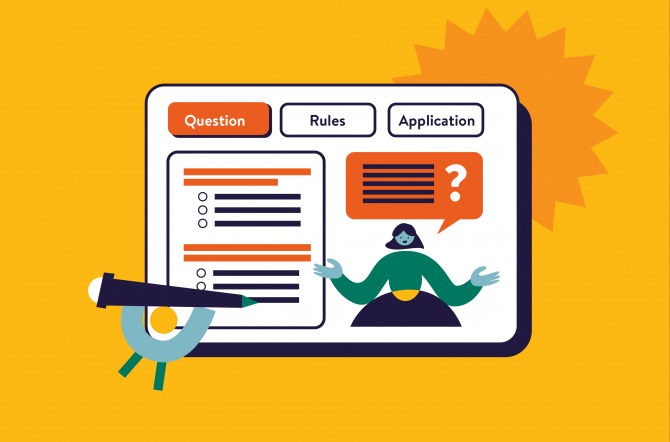Training and development are crucial components to aid in the formation of stronger teams, improved performance, and higher levels of engagement. In the process of building powerful training courses, setting learning and development goals must be placed as the top priority. To be effective in this role, as leaders of change, L&D managers must understand how to set L&D goals. From our own experience, there are four goal-setting suggestions we believe that will help you unlock your staff capability and potential through influential training and development.
What are L&D Goals?
L&D goals are a part of building the whole well-crafted training strategy. Many people often use the two terms “goals” and “objectives” equally in every context, however, in fact, they are not alike. Unlike training objectives that focus on short-term achievement, training goals tap into more inclusive attainment. Goals are the higher-order ambitions you have for your employees, whereas objectives are the explicit, measurable competencies you would evaluate to see if your goals were accomplished.
Most importantly, training goals must be aligned with the company’s overall business strategy in order to be effective. It needs to assist in reinforcing company values and culture, as well as unite people around a common goal.
Preparation Checklist to Power your Digital Transformation
Wondering if you miss anything in your preparation to digitize your training? This is just what you need.
Workplace training goals examples
Here are a few examples of workplace training goals in sales centers:
- By the end of the quarter, customer response rates will increase by 25%.
- Within three months, reduce the time it takes to compose an article by 15%.
- By April, customer concerns will be resolved 50% faster.
- After completing this course, customer service professionals will be able to resolve 100% of warranty queries without escalation.
Workplace training objectives examples
As mentioned before, learning and development goals are components that assure the success of training goals. They are correlated with the immediate outcomes of any training program, including:
- The course competence rate achieves up to 90%
- Employee engagement remains stable from the beginning to the end of the course.
- Employees give positive feedback on the training materials, proving the relevancy and usefulness of the content and design.
Why Setting Learning and Development Department Goals so Important?
While an after-action assessment is necessary for your most important programs, you should focus more on what you want to accomplish upfront. If you only have a limited budget, it’s highly recommended to spend more time setting L&D goals upfront than it is to spend time evaluating the program after it’s been implemented. In doing so, your company can both transform the workforce’s capability and optimize the budget.
4 Obstacles When Setting Learning and Development Goals
An urge to set new L&D goals is frequently linked to a list of specific challenges that keep us from achieving them:
- We don’t even begin: It hasn’t become ingrained in our daily lives. We may even have opportunities to begin, but we are hesitant to do so because it is unfamiliar and uncomfortable, or we are afraid of backlash.
- We get off track: It’s possible that your current burden will prevent you from accomplishing your goal. Circumstances or situations aren’t conducive to achievement.
- We are reluctant to stop when a goal becomes unproductive: Even though we recognize things aren’t functioning anymore, whether it’s due to expense or unhappiness with progress, we continue to work toward that goal. We either try to ignore or strive to push forward instead of taking a step back to examine where we need to go next.
- We set too high hopes: We may fall into the trap of attempting to attain too many goals at once, or a goal may be utterly unachievable to achieve in the first place. Indeed, we achieve nothing.
4 Tips for Setting Effective Learning and Development Goals
1. Understand the starting point
Before setting the objectives of L&D, managers should know where employees stand in terms of the skill standard, as well as their skill gaps. Setting performance objectives necessitates a thorough assessment of how workers are presently performing and matching goals to their real requirements.
You must also decide what level you want to reach with your upskilling. What is the ultimate goal in this situation? Is it a professional credential? If necessary, it is recommended to conduct a needs assessment to establish which abilities are weak or inadequate. This might also assist you in identifying roles that require new talent.

2. Align with a clear future
Training goals should not be exercised and homework to learn and grow. It shouldn’t be something your team members do “just because” or because it’s expected of them by their managers. While you can force it, you’ll end up with disengagement, devaluation, and detachment. So, what’s the best way to go around this? You can try to link the modules to the future of each employee. You’ll explain why it matters – not simply why the information is essential, but how it relates to the employee’s future.

Recommend reading:
3. Make it meaningful
Take the time to make the significance (and underlying worth) of each lesson and framework evident. If required, provide a brief overview of what will be learned and why it matters before individual classes to drive home why what’s being taught matters.
It’s all part of the process of dismantling whatever mental obstacles your students may have. You may establish a deeper connection with your learners and get through whatever blinders they may have by saying plainly what they’ll learn and why it matters. In addition to making the content relevant to the person, make sure you explain why the material is vital to the team and the organization as a whole.
Recommend reading:
4. Set incremental goals
Finally, make sure you’re setting goals that are attainable step by step instead of overnight outcomes. Trying to go too far too quickly will make your employees not keep up with the speed. Sooner or later it going to be a type of burnout that can happen to anyone.
Break down your major learning and development goals into smaller, more achievable bits. Create content relating to each of those chunks and utilize it to assist connect the dots, with each step bringing your learners closer to completing the task. Chunking is a notion that has been utilized in a variety of industries to reduce difficult undertakings or goals into something more manageable.

Recommend reading:
Conclusion
While learning and human resources (HR) executives cope with a variety of challenging scenarios that indeed improve employee performance, productivity, and retention, most techniques and approaches have typically been more compliance-driven than provoking behavioral changes. Learning and development goals must be challenging but not too much to enhance their overall contribution abilities. Hopefully, after reading our article, you can see the value of setting effective training goals. By focusing first on creating strong goals, you’ve set yourself up for success.
Read more:







